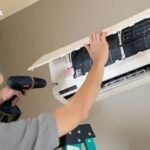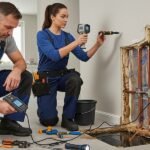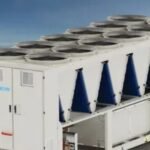Attic insulation replacement is a crucial home maintenance task that improves energy efficiency and plays a vital role in maintaining a safe living environment. Over time, pests or moisture can deteriorate, compress, or damage insulation materials, reducing their effectiveness. When replacing attic insulation, homeowners often focus on thermal performance, but fire safety should also be a top priority. Proper insulation replacement involves choosing materials and installation methods that minimize fire risks while providing adequate thermal protection. We will explore the key fire safety considerations that should guide attic insulation replacement projects, ensuring that your home remains both comfortable and secure.
Fire Safety Considerations During Attic Insulation Replacement
Selecting Fire-Resistant Insulation Materials
When replacing attic insulation, the type of material selected for attic insulation replacement can greatly influence fire safety. Many modern insulation products are manufactured to meet strict fire resistance standards, but not all insulation is created equal in this regard. Fiberglass and mineral wool insulation are commonly favored for their fire-resistant properties, as they are non-combustible and do not ignite easily. On the other hand, some foam-based insulations, while excellent for thermal resistance, can be more flammable if not properly treated with fire retardants. It is essential to review product specifications and certifications for fire ratings before installation. Using materials that resist ignition and slow the spread of flames provides crucial time to evacuate in the event of a fire, potentially saving lives and reducing property damage.
Maintaining Proper Clearance from Heat Sources
Attics often contain electrical wiring, HVAC equipment, recessed lighting fixtures, and chimneys, all of which can be sources of heat or sparks. During insulation replacement, maintaining appropriate clearance between insulation materials and these heat sources is critical to preventing accidental fires. Building codes typically specify minimum distances that must be observed to reduce fire hazards. For instance, recessed lighting fixtures often require a gap free of insulation unless the fixture is rated for direct contact with insulation. Likewise, chimneys and flue pipes must have clearances that prevent heat buildup in adjacent insulation. Failure to maintain these clearances can cause insulation to overheat, melt, or ignite, creating dangerous conditions. Insulation installers should carefully inspect these areas and ensure that all clearances comply with local fire and building regulations.
Proper Installation Techniques to Prevent Fire Risks
Even fire-resistant insulation materials can become hazardous if not installed correctly. For attic insulation replacement, attention to detail during installation can reduce fire risks. One important consideration is avoiding the blockage of ventilation pathways in the attic. Proper attic ventilation, through companies like Surespan, can help regulate temperature and moisture, reducing the likelihood of overheated spots that could ignite flammable materials. Insulation should be installed in a way that allows airflow around critical components such as exhaust vents and soffits.
Additionally, insulation must not be installed over or too close to heat-producing devices like chimneys or light fixtures unless they are designed for such use. Sealing gaps and avoiding contact with electrical wiring are also essential to prevent potential ignition sources. Careful installation helps maintain both the thermal and fire safety integrity of the attic space.
Addressing Electrical Wiring and Fire Hazards
Electrical faults are a common cause of attic fires, so replacing insulation provides an opportunity to inspect wiring conditions. Over time, electrical wires may degrade, become damaged by pests, or be improperly installed. During attic insulation replacement, any exposed wiring should be checked for fraying, loose connections, or outdated materials that increase fire risk. Insulation materials should never be compressed tightly around wiring, as this can cause overheating. In some cases, it may be necessary to consult a licensed electrician to upgrade or repair wiring before proceeding with insulation installation. Ensuring that electrical components meet current safety standards and are properly insulated from surrounding materials significantly lowers the chance of electrical fires starting in the attic.
Using Fire Barriers and Fire-Resistant Barriers
In some attic configurations, additional fire safety measures like fire barriers may be required. Fire barriers are materials or assemblies installed to slow the spread of fire between different parts of a building. During insulation replacement, it may be appropriate to include fire-resistant drywall, foil-faced insulation, or other barrier products designed to provide an extra layer of protection. These barriers can be particularly important in homes with wood framing or where attic spaces connect directly to living areas below. Fire barriers reduce the risk that a fire starting in the attic will rapidly spread to other parts of the home, increasing safety for occupants and emergency responders. Incorporating fire barriers requires knowledge of local building codes and fire safety standards, so consulting official guidelines during insulation replacement is recommended.
Attic insulation replacement should always consider fire safety as a fundamental aspect of the project. Selecting fire-resistant materials, maintaining clearance from heat sources, applying proper installation techniques, inspecting electrical wiring, and utilizing fire barriers all contribute to creating a safer attic environment. These precautions help prevent fires, protect property, and ensure the well-being of those living in the home. By taking these fire safety considerations seriously during insulation replacement, homeowners can enjoy improved energy efficiency along with peace of mind knowing their home is safeguarded against potential fire hazards.














